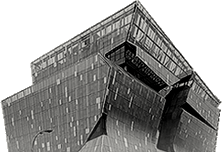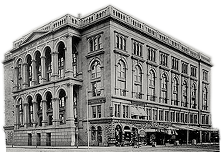Contemporary Art Issues from Both Sides of the Classroom
POSTED ON: April 20, 2017
By Masha Vlasova
In high school I loved to draw. I was excited to attend the Cooper Union’s Summer Art Program primarily because of the numerous hours of drawing instruction a week. I knew nothing about contemporary art and thought I didn’t like it. At the Metropolitan Museum of Art, I was drawn to Claude Monet’s Rouen Cathedral series. I didn’t quite know why I liked them, perhaps because they were “realistic.” Needless to say, when I found out that in addition to drawing at CUSAI, we were expected to attend something called “Contemporary Art Issues,” and that it involved writing and discussion about said “issues,” I was intimidated.
From day one we were expected to share our observations, feelings, and interests in writing and discussion in response to museum trips and studio visits with contemporary practitioners. Our instructors and TAs dragged us all over the five boroughs. One memory that stuck with me was attending a Bowery Poetry Club reading. Later in class we responded to this experience with our own poetry. It was unusual (and for that reason exciting) to be put in dialogue with an established living poet’s work. Just as it was new and exhilarating to visit an artist’s studio and ask them questions about their craft and see their process “behind the scenes.” No one never told us that art we were looking at was “good” or “bad.” Instead the instructors insisted we define this for ourselves. At the time, I probably wasn’t able to articulate how and why this course was important for my development. I just knew that I was being exposed to something entirely different and new.
Thankfully not all lessons need to be translated into language in order to be internalized.
At the Cooper Union and later at Yale School of Art to my own surprise I didn’t focus on painting or drawing but rather turned to video, performance, and text. I still visit Claude Monet’s Rouen Cathedral series every time I go to the Met. I’ve come to appreciate these works as mediations of time, concerned with light and the particular political moment of their creations. When I was a student, Contemporary Arts Issues planted a seed that was later nurtured by my many teachers, mentors, and colleagues in college and graduate school. I seek to plant that very seed when I teach this course.
No Contemporary Arts Issues class is like another. Designing the course is a research project in its own right. I look into programming at well-known museums, as well as small artist-run and alternative exhibition spaces. As I make lists of shows and artists, read biographies and press releases, different themes begin to emerge. Last summer we broadly focused on memory: cultural, historical, global, and personal. In class, prior to seeing Cornelia Parker’s Transitional Object (PsychoBarn) at the Met Roof Garden we discussed this theme broadly. What constitutes cultural memory? What constitutes appropriation? A Remake? A Copy? Later at the museums, I asked students to consider a different set of questions. How does the sculpture make our bodies feel? How does it relate to our bodies in space? To the space itself? What does it ask of us physically? Looking at art in a museum, gallery, or a specific site is essential to a well-rounded art education. Context grounds broad themes and metaphors in an immediate experience.
I love to work with students that are at the beginning of their arts career, when there is much potential for discovery. Often I see students coming in with an intended art major or a notion of what art is. It’s always exciting to see students expand their perspectives, as they begin to see what can be possible. Seeing students transform from being intimidated by new perspectives and possibilities to feeling empowered and excited by them is what makes teaching this course so rewarding.




